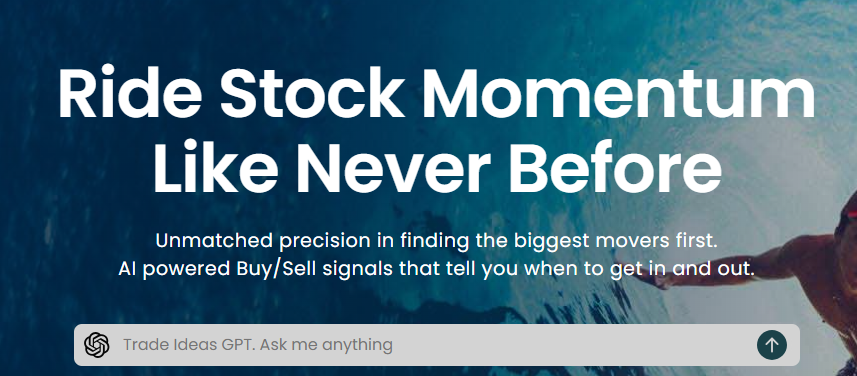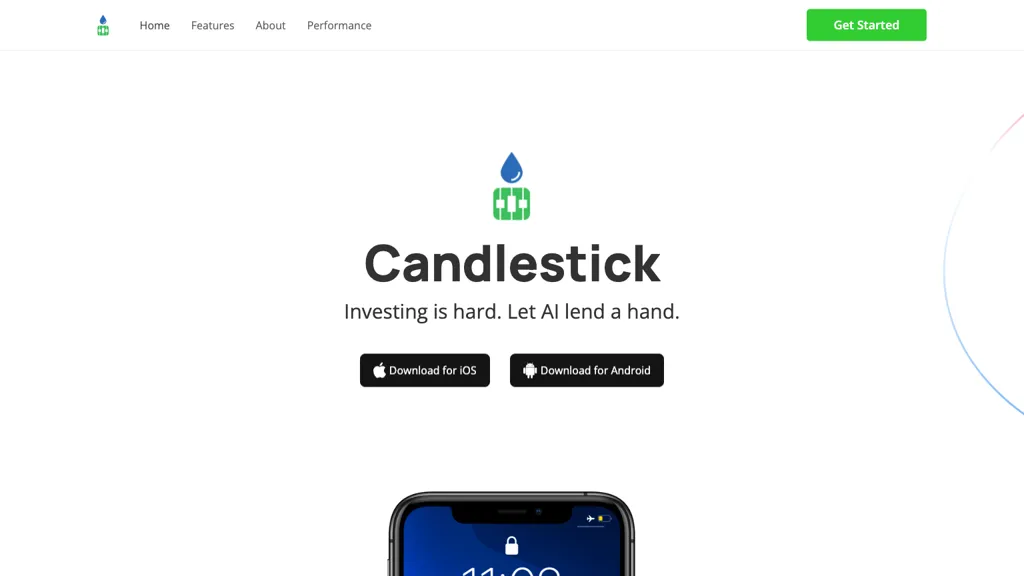20 Excellent Advice On Selecting AI Stock Trading Platform Sites
20 Excellent Advice On Selecting AI Stock Trading Platform Sites
Blog Article
Top 10 Tips To Assess The Market Coverage For Ai Software For Predicting And Analysing Stocks
Market coverage plays a crucial role in evaluating AI software for stock prediction and analysis, as this determines your access to a wide variety of financial and asset markets. Market coverage is crucial because it allows you to diversify your portfolio, learn about the world's markets, and adjust to different strategies for trading. Here are 10 tips on how to evaluate the market coverage of platforms.
1. Evaluate Supported Asset Classes
Stocks: Make sure the platform includes the major exchanges for stocks (e.g., NYSE, NASDAQ, LSE, HKEX) and includes small-cap large-cap and mid-cap stock.
ETFs: Ensure that the ETF platform you are using offers an array of ETFs that give you a variety of exposure to different categories, themes and countries.
Futures and options: Check whether the platform supports derivatives like options, futures, and other leveraged instruments.
Forex and commodities: Assess whether the platform offers currency pairs, precious metals, energy commodities as well as agricultural commodities.
Cryptocurrencies Find out if the platform supports popular cryptocurrencies like Bitcoin, Ethereum, and altcoins.
2. Verify coverage in your area
Global markets: The platform should be able to cover the major global markets, including North America and Europe, Asia-Pacific and emerging markets.
Regional focus: Check if the platform is focused on certain regions or market segments that are in line with your preferences for trading.
Local exchanges: Check that your platform supports local and regional exchanges that match your needs or your strategy.
3. Consider comparing real-time data with delayed data Delayed Data
Real-time Market Data: The system must provide real-time trading data to allow for rapid decision-making.
Delayed Data: See if the delayed data can be obtained for free or for a low cost. These could be enough for long-term investors.
Data latency: Determine if the platform minimizes latency in real-time feeds of data, particularly for high-frequency trading.
4. Evaluation of Data from the Past
Depth historical data: Ensure that the platform can provide ample historical data (e.g. over 10 years worth of data) for backtesting and analysis.
Check the granularity of historical data.
Corporate actions: Examine to determine if the data has been reported prior to. Dividends as well as stock splits and all other corporate actions need to be included.
5. Check the Market Depth and Place an Order Books
Level 2 data: Check that the platform has Level 2 data for price discovery and for better execution.
Find out if there is a real-time bidding system and asking spreads. This will guarantee that the pricing is correct.
Volume data: Check if the platform has detailed volume data for analyzing liquidity and market activity.
6. Assess Coverage of Indices and Sectors
Major indices - Make sure your platform supports major indices like the S&P 500 (e.g. NASDAQ 100 or FTSE 100), for benchmarking using indexes.
Sector-specific data: For targeted analysis, make sure the platform has data on a particular sector (e.g. technology, healthcare, or energy).
Custom-designed indices. Check if the platform supports creating and monitoring custom indices based on your needs.
7. Assess the Integration of News and Sentiment Data
News feeds : Ensure that you use a platform that incorporates live news feeds, particularly from reliable media outlets (e.g. Bloomberg and Reuters) for the most significant market occasions.
Sentiment analysis: Check whether the platform has tools for analyzing sentiment based on news, social media, or other data sources.
Event-driven strategies (e.g. earnings announcements or economic reports) Make sure that your platform supports trading strategies that are based on news events.
8. Check for Multi-Market Trading Ability
Cross-market trade: Check that the platform supports trading across different markets and asset categories using a common interface.
Conversion of currency: Check if the platform can handle multi-currency accounts and automatic currency conversions for international trading.
Support for time zones: Check whether the trading platform you are using can be used in different time zones for markets across the globe.
9. Review the coverage of different data sources
Alternate data sources: To gain unique insights, check if the platform uses different data sources.
ESG data - Check that the platform provides environmental, governance, and social information (ESG). This is essential for a the socially conscious investment.
Macroeconomic data: Make sure that the platform contains macroeconomic information (e.g. inflation, GDP) for fundamental analysis.
Review user feedback and market reputation
User reviews: Look for user reviews to get a feel for the platform.
Check for the platform's industry reputation. This includes recognition and awards from experts in the field.
Case studies: Check for cases studies, testimonials and other details that highlight the platform's effectiveness on specific market segments or asset types.
Bonus Tips
Trial period: You may use an demo, trial or free trial to test the coverage of markets as well as the quality of data.
API access: Check to see if the API of the platform supports an analysis that is custom made using market data.
Customer support: Ensure the platform has support for market-related inquiries or data-related issues.
These tips will help you assess the market coverage offered by AI trading platforms that predict/analyze the prices of stocks. This way you'll be able to choose the platform which provides you with the data and markets you require for successful trading. Market coverage is important to diversify portfolios, discover new opportunities and adapt to market conditions. Read the recommended I loved this about stock ai for website recommendations including using ai to trade stocks, best ai trading software, best ai trading software, best ai trading software, best ai stock trading bot free, market ai, ai chart analysis, ai stock, ai for investment, ai investment app and more.
Top 10 Suggestions For Evaluating The Flexibility And Trial Ai Platform For Analyzing And Predicting Stocks
Before signing up for long-term contracts It is important to assess the trial options and flexibility of AI-driven prediction and trading platforms. These are the top 10 ways to evaluate these aspects:
1. Get a Free Trial
Tip: Check if the platform gives a no-cost trial period to test its features and performance.
Why? You can try the platform without cost.
2. Trial Duration and Limitations
Tips: Check the duration and limitations of the free trial (e.g. limitations on features or access to data).
Why: Understanding trial constraints can help you decide if it offers a complete evaluation.
3. No-Credit-Card Trials
Look for trials which do not require credit cards to be paid in advance.
Why? This will lower the risk of unplanned charges and allow you to opt out.
4. Flexible Subscription Plans
Tips - Make sure the platform allows flexibility in subscriptions (e.g. quarterly, annually, monthly) and clearly defined pricing tiers.
The reason: Flexible plans let you choose the amount of commitment that's best suited to your budget and needs.
5. Customizable Features
TIP: Make sure the platform allows customization of features like alerts, risk levels or trading strategies.
Why: Customization adapts the platform to your trading objectives.
6. Easy cancellation
Tip: Find out the ease it takes for you to lower or end the subscription.
What's the reason? By allowing you to unwind without hassle, you'll be able to be sure that you don't get stuck on an arrangement that's not suitable for you.
7. Money-Back Guarantee
TIP: Find websites that provide a money-back assurance within a certain time.
Why this is important: It gives you an additional safety net if the platform doesn't match your expectations.
8. All features are accessible during the the trial
TIP: Make sure the trial version contains all the essential features and is not a limited version.
Why: Testing the full features helps you make an informed choice.
9. Customer Support During Trial
Tips: Evaluate the quality of support offered by the business throughout the trial.
You can make the most of your trial experience by utilizing reliable assistance.
10. Feedback Mechanism Post-Trial Mechanism
Tips: See if you can provide feedback to the platform after your test. This will help improve their service.
Why: A platform that valuess user feedback will be more likely to evolve in order to meet the demands of its users.
Bonus Tip Optional Scalability
Ensure the platform can scale to meet your requirements, providing greater-level plans or features as your trading activities grow.
If you think carefully about the options available for trial and flexibility, you will be able to make a well-informed decision as to whether or not an AI stock prediction platform is the best option for you. Check out the most popular stocks ai recommendations for website info including ai stock prediction, can ai predict stock market, free ai stock picker, invest ai, investing with ai, investing with ai, can ai predict stock market, ai tools for trading, can ai predict stock market, free ai tool for stock market india and more.